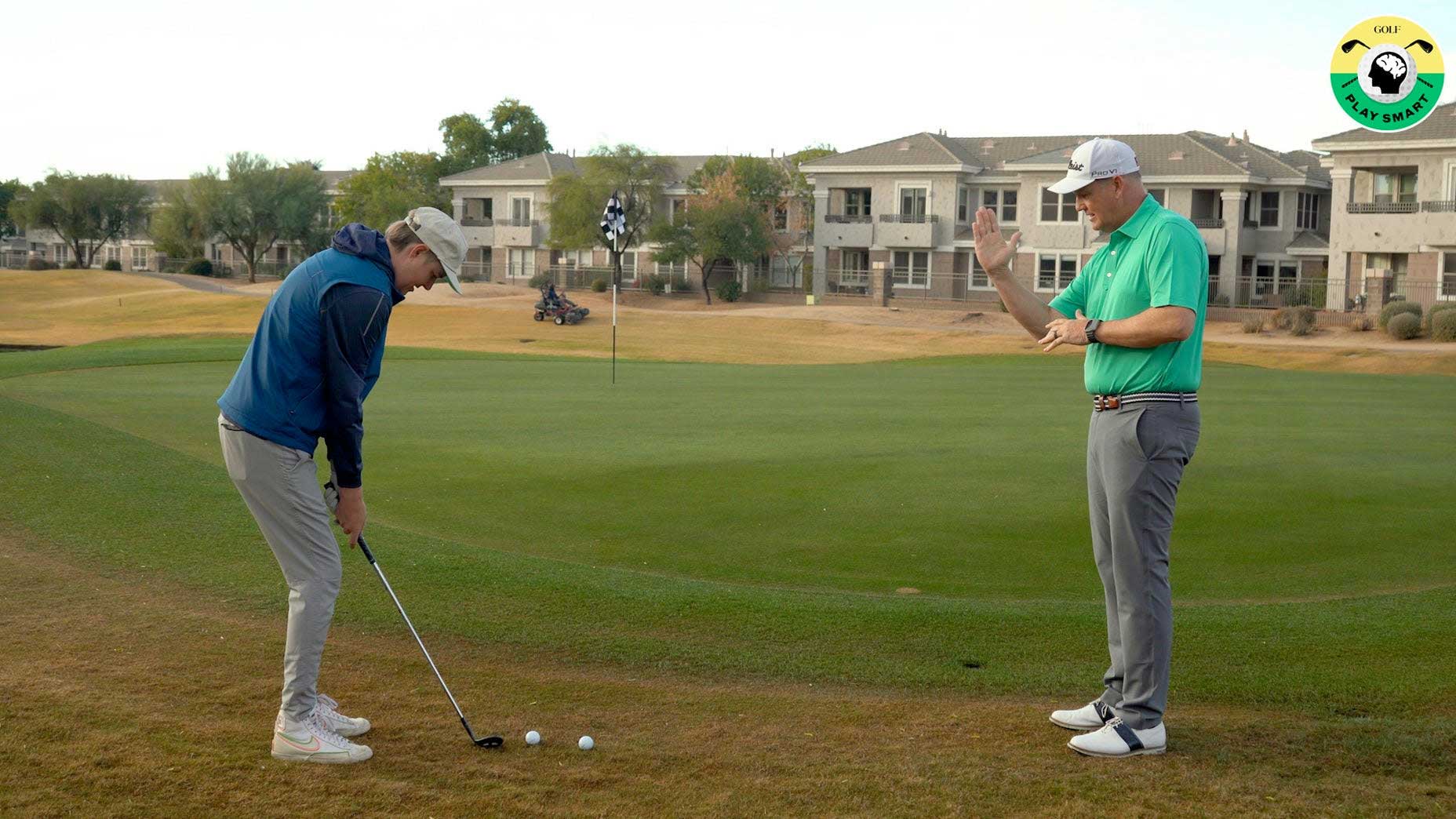Latest In Instruction
2 days ago
Over $140 of value - Just $39.99
InsideGOLF
When faced with a short shot around the greens, should you hit a chip or a pitch?
GOLF.com
Welcome to Play Smart, a regular GOLF.com game-improvement column that will help you play smarter, better golf.
When you get close to the green — but aren’t quite putting — it’s important to have a variety of shots in your arsenal. Different situations call for different types of shots, so it’s important you can execute the one that’ll get the ball closest to the hole.
Two of the most useful (and common) short-game shots are chips and pitches, and each has their own benefits. But which one is better for amateur golfers to rely on? For answers to that, we turn to GOLF Top 100 Teacher Jon Tattersall.
Chip shots are typically used right around the edges of the greens. The goal is for the ball to come out lower than a pitch shot and to roll along the ground most of the way to the hole.
“Generally, you put the ball further back and lean the shaft forward,” Tattersall says. “And generally people are trying to hit it in there low and drive the handle forward.”
This is a great shot for when you need to keep the ball low and don’t have much trouble between your ball and the hole.
Pitch shots can also be used right around the edges of the greens, but are typically played on shots that are a bit longer. The goal is to use more typical full-swing fundamentals and to carry the ball further than you would on a chip shot.
“You’ve got the ball pretty much in the center of the stance, [and] you’re a little bit on your left leg,” Tattersall says. “And then you’re really trying to feel the momentum of the club swing.”
Using this technique is perfect for when you need to carry the ball a bit further or need a little more loft on the shot.
Chips and pitches each have their own benefits and specific situations in which each should be deployed. However, when Tattersall is teaching his students, he likes them to focus on using pitch shots most of the time.
His reasoning? It builds on the fundamentals of the full swing.
“I want them to pitch it because it really helps with the full-swing stuff,” Tattersall says. “[The chipping technique] doesn’t cross over very well to any other shot in golf. It’s a very specific technique. You can do it well, but it doesn’t help you with everything else.”
If you’re in a time crunch with your practice routine, devote that short-game time to pitching rather than chipping. Not only will you learn to master one of the most fundamental shots in golf, you’ll also be able to take that technique and apply it to the rest of your full-swing shots.

Golf.com Editor
Zephyr Melton is an assistant editor for GOLF.com where he spends his days blogging, producing and editing. Prior to joining the team at GOLF, he attended the University of Texas followed by stops with the Texas Golf Association, Team USA, the Green Bay Packers and the PGA Tour. He assists on all things instruction and covers amateur and women’s golf. He can be reached at zephyr_melton@golf.com.